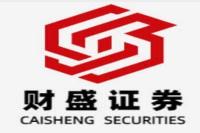Decoding China's State-Owned Enterprises: A Deep Dive into 2024's Performance (Jan-Oct)
Meta Description: Analyzing the financial performance of China's state-owned enterprises (SOEs) from January to October 2024, including revenue, profit, tax burden, and debt levels. Uncovering key trends and challenges facing these economic giants. #SOEs #ChinaEconomy #StateOwnedEnterprises #FinancialPerformance #EconomicAnalysis
Wow, China's state-owned enterprises (SOEs) – they're economic behemoths, right? Think colossal industrial complexes, sprawling infrastructure projects, and a massive chunk of the national economy. But what's really happening behind the scenes? This isn't just another dry financial report; this is an in-depth exploration of the performance of these giants from January to October 2024, a period marked by both global uncertainty and domestic economic adjustments. We'll slice and dice the data, unpack the nuances, and offer insightful analysis that goes beyond the headlines. Forget the jargon-heavy reports – we're here to provide clear, concise, and actionable insights, drawing on expertise and readily available information. This isn't just about numbers; it's about understanding the implications for China's economic future and the global landscape. Buckle up, because the journey into the heart of China's SOE performance is about to begin! We'll uncover the surprising trends, the hidden challenges, and what this all means for the country's economic trajectory. Are we looking at a slowdown, a strategic repositioning, or something else entirely? Get ready to unravel the mystery!
Key Performance Indicators: A Closer Look at 2024's Numbers
The initial figures for China's SOEs in 2024 (January-October) paint a complex picture. While the overall picture isn't catastrophic, it certainly isn't brimming with exuberant growth. Let's break down the key performance indicators (KPIs):
-
Revenue: A modest 0.9% year-on-year (YoY) increase in total operating revenue to a staggering 676,606 billion yuan. This suggests a relatively stable, albeit unspectacular, performance. While not a dramatic fall, the lack of robust growth warrants closer examination.
-
Profits: Here's where things get a little more concerning. Total profits dipped by 1.1% YoY, reaching 35,371.9 billion yuan. This decline hints at underlying challenges within the SOE sector, possibly reflecting increased competition, rising costs, or a shift in market dynamics.
-
Taxes: SOEs paid 48,524.7 billion yuan in taxes, showcasing a minor 0.4% YoY decrease. This slight drop might be linked to the somewhat lower profit margins, but further analysis is needed to isolate the contributing factors.
-
Debt: The asset-liability ratio (a key indicator of financial health) ticked up slightly to 64.9%, a 0.1 percentage point increase. While not alarming in isolation, this upward trend requires monitoring, especially given the global economic climate.
It's crucial to remember that these are broad strokes; the performance varies drastically across different sectors and individual enterprises. Some SOEs are thriving, while others are struggling. Understanding these variations is key to interpreting the overall picture.
Dissecting the Data: A Deeper Dive into Sectoral Performance
To truly grasp the situation, we need to delve into the performance of individual sectors. The provided report unfortunately doesn't offer a sector-by-sector breakdown. However, based on general economic trends and knowledge of the Chinese economy, we can speculate on the potential performance discrepancies.
For instance, sectors heavily reliant on exports might have faced headwinds due to global economic slowdown. Conversely, sectors focused on domestic consumption might have shown more resilience. Further, the energy and infrastructure sectors, often significant players in the SOE landscape, may have experienced different performance trajectories due to government policies and investment strategies. Obtaining a more granular dataset is essential for a truly comprehensive analysis.
A detailed breakdown by sector would reveal specific challenges and opportunities. For example, the agricultural sector might be affected by climate change, while the tech sector may be navigating evolving regulatory landscapes. This level of detail is critical for developing targeted strategies and informed policy decisions.
Navigating the Nuances: Why the Numbers Don't Tell the Whole Story
Interpreting these figures requires caution. The report itself acknowledges that the composition of the SOE sector changes over time due to mergers, acquisitions, and other corporate actions. This makes direct year-on-year comparisons potentially misleading. Furthermore, the exclusion of state-owned financial institutions significantly alters the overall picture. The impact of these factors needs to be considered to avoid misinterpretations.
Moreover, the macroeconomic environment plays a crucial role. Global economic instability, trade tensions, and domestic policy shifts all influence the performance of SOEs. Isolating the impact of these external factors from the internal operational efficiency of the enterprises is a challenging but necessary task for accurate assessment.
The Road Ahead: Challenges and Opportunities for China's SOEs
The performance data for the first ten months of 2024 presents both challenges and opportunities for China's SOEs. The relatively stagnant revenue growth and slight profit decline signal a need for strategic adjustments. This could involve diversifying revenue streams, enhancing operational efficiency, and embracing technological advancements. The rising debt levels also require a cautious approach. Implementing robust risk management strategies and optimizing capital allocation are paramount.
However, the underlying strength of the Chinese economy, coupled with government support, provides a foundation for future growth. Targeted investments in strategic sectors, coupled with innovative reforms, could unlock significant potential. The SOEs remain key drivers of economic development, and their successful navigation of current challenges will be crucial for China's overall economic trajectory.
Furthermore, the government's role in guiding and supporting SOEs will be crucial in determining their future success. Strategic policy adjustments, targeted investments, and effective regulatory frameworks will all shape the performance of these economic giants.
The Role of Government Policy: A Crucial Influence
The Chinese government plays a pivotal role in shaping the landscape for SOEs. Government policies, ranging from industrial guidance to financial regulations, significantly influence their performance. Understanding these policies is crucial for interpreting the performance data and predicting future trends. For example, policies promoting technological innovation or encouraging mergers and acquisitions could drastically impact sectoral performance. Similarly, regulatory changes impacting specific industries could either boost or hinder growth.
Common Questions and Answers (FAQs)
Here are some frequently asked questions about the performance of China's SOEs and their broader impact:
Q1: What are the primary factors contributing to the decline in profits?
A1: The decline in profits is likely a multifaceted issue. Factors could include increased global competition, rising input costs (raw materials, labor), and a shift in market demand. Further research is needed to pinpoint the precise contributions of each factor.
Q2: How does the asset-liability ratio of 64.9% compare to industry benchmarks?
A2: Determining whether 64.9% is high or low requires comparing it to industry benchmarks and historical data for Chinese SOEs. Without this additional context, it's difficult to definitively assess the risk level.
Q3: What measures are the government taking to address the challenges facing SOEs?
A3: The Chinese government is likely employing a range of measures, from financial support and policy adjustments to structural reforms. Specific policies would need to be researched for a complete answer.
Q4: What is the likely impact of this performance on China's overall economic growth?
A4: The impact will depend on the extent to which the challenges facing SOEs are addressed. A sustained decline in performance could negatively affect overall growth, while effective reforms and government support could mitigate the impact.
Q5: How does the performance of China's SOEs compare to those in other countries?
A5: A comparative analysis with SOEs in other countries requires extensive research and a careful consideration of various factors, accounting for differences in economic structures and government policies.
Q6: What are the prospects for SOE performance in the remaining months of 2024 and beyond?
A6: The outlook depends on various unpredictable factors, including global economic conditions, domestic policy adjustments, and the success of reform initiatives. A cautious but optimistic approach is warranted, given the government's commitment to supporting the SOE sector.
Conclusion: A Cautious Optimism
While the January-October 2024 performance data for China's SOEs doesn't paint a picture of runaway success, it's far from a crisis. The modest revenue growth and slight profit decline warrant attention and proactive measures. However, given the government's significant role and the inherent resilience of the Chinese economy, a cautious optimism for the future remains warranted. Further in-depth analysis, including sector-specific breakdowns and a detailed examination of government policies, is crucial for a more complete understanding. The journey to unraveling the full story of China's SOE performance is ongoing, and only time will reveal the complete picture.



